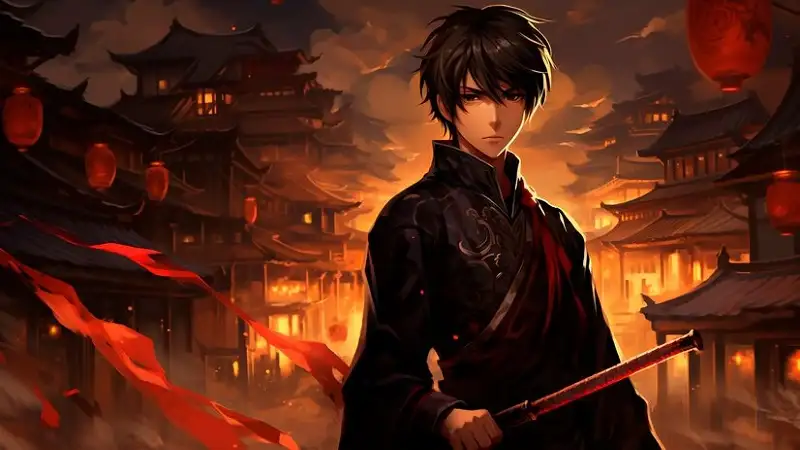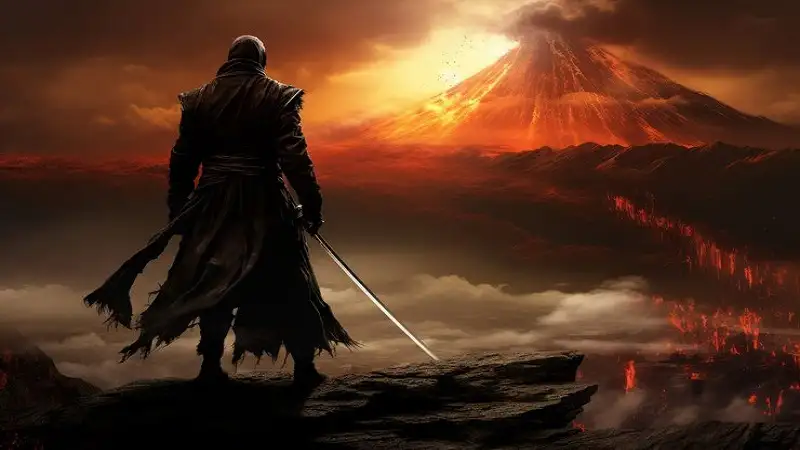Art:_9i2okxunvi= Demon Slayer : Kimetsu no Yaiba” has taken the world by storm with its gripping storyline, compelling characters, and most notably, its outstanding artwork. Based on Koyoharu Gotouge’s manga, the anime adaptation by Ufotable has set new benchmarks in animation quality. Why has it captured such a massive audience? It’s more than just a great plot—the art and animation breathe life into every scene, making Demon Slayer a visual masterpiece.
The Artistic Brilliance of Demon Slayer
In the world of anime, visuals are everything. Art:_9i2okxunvi= Demon Slayer stands out because of its exceptional use of animation techniques, blending traditional Japanese artistry with modern visual storytelling. The result? Each episode feels like a moving painting, immersing the audience into a world where beauty, violence, and emotion intertwine seamlessly.
Unique Art Style of Demon Slayer
One thing that immediately sets Art:_9i2okxunvi= Demon Slayer apart is its art style. Drawing inspiration from traditional Japanese art, the anime incorporates bold, striking lines and an attention to detail that recalls ancient woodblock prints (Ukiyo-e). Characters are drawn with defined features, while the backgrounds are meticulously crafted, evoking a sense of nostalgia for Japan’s Taisho period (1912-1926).
The combination of these traditional elements with cutting-edge animation results in a series that is visually stunning. The juxtaposition of classic and contemporary art styles gives the anime a distinctive look that fans instantly recognize.
Character Design and Artistic Details
Tanjiro Kamado: The Heart of the Story
The protagonist, Tanjiro Kamado, is more than just a hero. His design is thoughtful and deliberate, symbolizing resilience, compassion, and strength. From his iconic hanafuda earrings to his gentle yet determined facial expressions, the artwork reflects his character’s emotional depth. Every battle he fights shows not only his physical prowess but also his internal struggles.
Nezuko Kamado’s Transformation
Nezuko Kamado, Tanjiro’s sister, is another character whose design evolves throughout the series. As a demon, her appearance changes, showcasing the duality between her human and demonic sides. Her expressions, even with a bamboo gag in her mouth, convey a world of emotion—from sadness and rage to love and tenderness.
Villains: The Dark Side of Demon Slayer
Villains like Muzan Kibutsuji are designed with an aura of mystery and malevolence. Every aspect of their appearance, from their piercing eyes to their intimidating posture, is crafted to evoke fear and admiration. The stark contrast between the heroes and villains is highlighted through the use of darker color palettes, adding layers to the narrative through art.
The World-Building in Demon Slayer
Art:_9i2okxunvi= Demon Slayer setting in Taisho-era Japan provides a unique backdrop that blends historical authenticity with fantasy elements. The cities, villages, and landscapes are beautifully rendered, grounding the supernatural elements of the series in a recognizable world.
The Role of Nature in Demon Slayer’s Art
The use of nature in Art:_9i2okxunvi= Demon Slayer is symbolic and visually significant. Lush forests, rivers, and mountains are recurring themes, and the natural world often mirrors the characters’ internal states. For example, the serene calm of a forest can represent a moment of peace, while an approaching storm might signal an imminent battle.
Symbolism and Metaphors in Demon Slayer’s Art
Symbolism runs deep in Demon Slayer’s visual language. The Sun and Moon are recurring motifs, representing life, death, and the eternal struggle between good and evil. The colors used in the series are more than aesthetic choices—they convey emotions and themes. For example, warm colors like orange and red are often used to signify power and determination, while darker shades represent fear and despair.
Animation Technology Used in Demon Slayer
Ufotable, the animation studio behind Art:_9i2okxunvi= Demon Slayer has pushed the boundaries of what’s possible in anime. By blending 2D animation with 3D CGI, they’ve created dynamic and fluid visuals that elevate every scene. The camera angles, depth of field, and intricate details showcase the technology behind the scenes.
Battle Scenes and Animation
One of the standout features of Art:_9i2okxunvi= Demon Slayer is its battle scenes. The fluidity of movement and the attention to detail make every fight scene exhilarating to watch. Unlike many other anime where fights can feel static, Demon Slayer’s battles are alive, with characters darting, spinning, and clashing in ways that feel both real and surreal.
Special Effects in Demon Slayer
Water Breathing Techniques
Tanjiro’s water-breathing techniques are a visual spectacle. The way water flows around his sword, mimicking real-life water movements, is a masterclass in animation. These effects not only add to the beauty of the action but also enhance the tension and excitement.
Fire and Lightning Effects
Zenitsu’s lightning and Kyojuro Rengoku’s fire techniques are similarly captivating. These special effects don’t feel like mere add-ons; they are integral to the storytelling, making the fights more immersive and memorable.
How Art Enhances Storytelling in Demon Slayer
The artwork in Art:_9i2okxunvi= Demon Slayer is more than just eye candy—it’s a critical part of how the story is told. The creators use visual storytelling techniques to convey emotions and plot developments in subtle ways. From the lighting in a scene to the angle of a character’s face, every detail has meaning.
Depiction of Emotions through Art
Art:_9i2okxunvi= Demon Slayer excels at portraying emotions visually. Whether it’s Tanjiro’s sorrow or Nezuko’s rage, the art amplifies these emotions, making them feel real and palpable to the audience.
Visual Narrative Devices
Close-ups, dramatic lighting, and the use of contrast are key narrative devices in Demon Slayer’s visual language. These techniques draw the viewer’s attention to important moments, ensuring that the emotional weight of the scene is fully experienced.
Fan Art and Community Influence
The impact of Art:_9i2okxunvi= Demon Slayer art extends beyond the show itself. Fans worldwide have embraced the characters and world, creating fan art that keeps the spirit of the series alive. This community involvement has cemented Demon Slayer’s place as a cultural phenomenon.
Conclusion
The art of Art:_9i2okxunvi= Demon Slayer has redefined what anime can be. It’s not just about the story but how the story is told through art. From the intricate character designs to the breathtaking battle scenes, every frame is a work of art. Demon Slayer has left an indelible mark on the anime industry, and its artistic brilliance will be admired for years to come.

